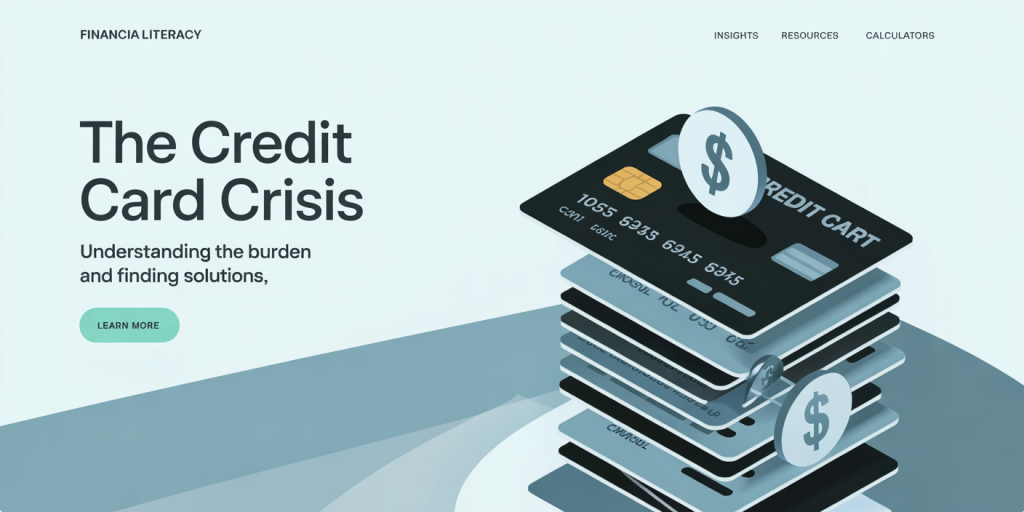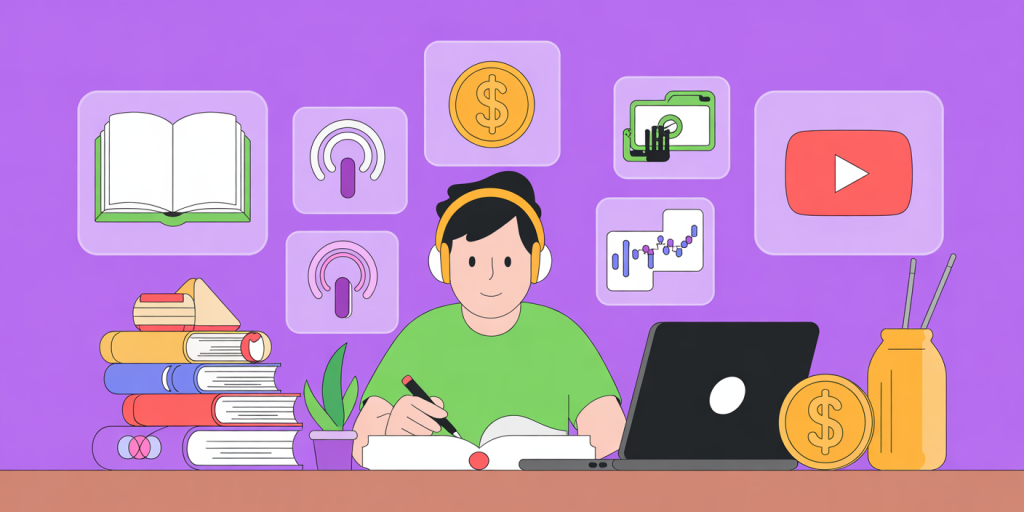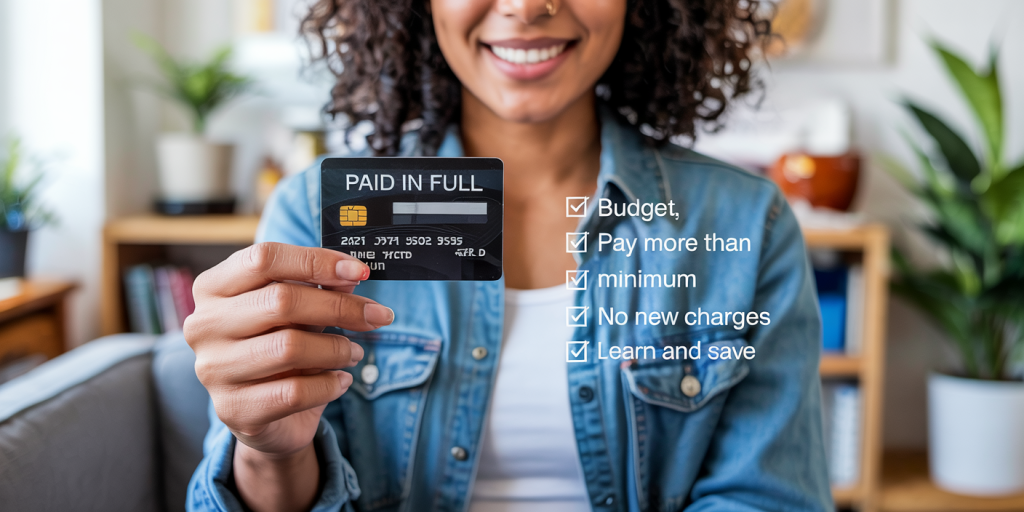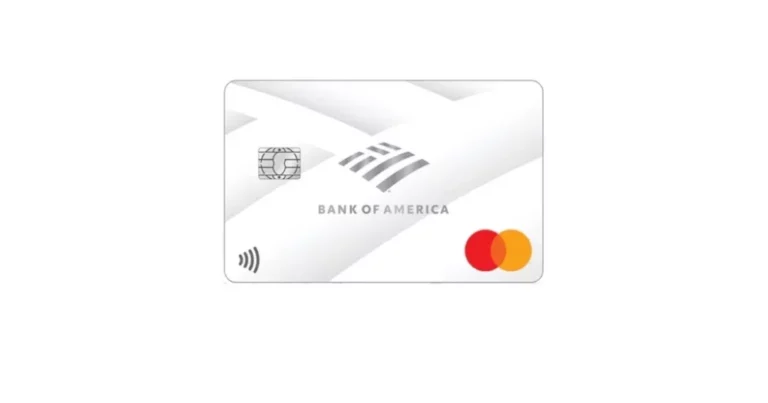Smart Ways to Avoid Credit Card Debt—Fast
Anúncios
Smart Strategies to Avoid or Eliminate Credit Card Debt

Credit cards have become deeply ingrained in everyday financial life in the U.S., offering unmatched convenience, purchasing power, and rewards. However, without responsible management, they can quickly transform from helpful tools into long-term debt traps.
The numbers speak for themselves: credit card debt in the U.S. has reached trillions of dollars, underscoring how easy it is to fall into financial trouble when spending goes unchecked.
Anúncios
The good news? You have control. Whether you’re aiming to avoid debt altogether or pay off existing balances, here are practical, proven strategies to help you regain control of your finances and build a more stable future.
1. Create a Realistic Monthly Budget
The first and most fundamental step to managing credit card use is gaining clarity on your cash flow. Without a detailed budget, it’s easy to overspend or underestimate your financial obligations.
Anúncios
✅ How to Start:
-
Track your income and expenses using apps like Mint, YNAB (You Need a Budget), or a simple spreadsheet.
-
Categorize your spending (rent, groceries, transportation, entertainment, debt payments).
-
Identify areas where you can cut nonessential expenses.
Once you have a clear picture, set a specific line item in your budget for credit card payments—this should be one of your top priorities. Every dollar saved by trimming excess spending can go directly toward reducing your debt.
2. Don’t Settle for the Minimum Payment
Paying only the minimum required on your credit card might keep your account current, but it won’t help you make meaningful progress in reducing your balance. In fact, it could trap you in a cycle of debt for years.
💳 Why It Matters:
-
Most credit cards carry interest rates above 20% APR.
-
The minimum payment often covers interest and a tiny portion of the principal.
✅ Actionable Tip:
-
Aim to pay the full balance each month if possible.
-
If not, pay as much over the minimum as you can to cut down on interest and accelerate your payoff timeline.
-
Consider using the avalanche or snowball method (explained below) to supercharge your strategy.
3. Stop Adding New Charges
If you’re already carrying a balance, the last thing you want is to increase it.
🚫 Avoid This Trap:
-
Use a debit card or cash for purchases to stay within your means.
-
Remove your credit card info from online platforms (Amazon, Uber Eats, streaming services) to reduce temptation.
-
Avoid “just this once” charges—they can quickly add up.
Until your debt is under control, focus 100% on repayment, not new spending.
4. Use Balance Transfers Strategically
If you’re struggling with high-interest credit card debt, a balance transfer card could offer temporary relief.
These cards allow you to move your balance to a new account with a 0% promotional APR, typically lasting 12–18 months.
💡 Why It Works:
-
You can pause interest accrual, meaning every payment goes directly toward reducing your principal.
-
This can save you hundreds of dollars—or more—if used correctly.
⚠️ But Watch Out:
-
Balance transfer fees are usually 3%–5% of the amount moved.
-
After the promo period ends, the standard APR resumes, often over 20%.
Do the math before transferring to ensure it genuinely helps, and commit to paying off the balance during the interest-free window.
5. Talk to Your Credit Card Issuer
If you’re feeling overwhelmed, don’t hesitate to reach out to your credit card company. Many issuers offer hardship programs or are willing to negotiate.
🗣️ You Can Request:
-
A temporary or permanent interest rate reduction
-
A fixed monthly payment plan
-
Waiver of late fees or penalty interest
-
Balance consolidation options
These options are often available to long-term customers in good standing. You just need to ask.
6. Follow the 48-Hour Rule
One of the easiest ways to accumulate debt is through impulse spending—especially with the “buy now, think later” culture of today’s online world.
🕒 Try This Simple Rule:
-
When tempted to buy a nonessential item, wait 48 hours before making the purchase.
-
Often, the urge will pass, and you’ll realize you didn’t really need the item after all.
This practice can prevent impulse buys and help you spend more mindfully.
7. Learn About Personal Finance

One of the best tools for avoiding future debt is education. The more you know about how credit works, the better your decisions will be.
📚 Start Here:
-
Free resources like blogs, podcasts, YouTube channels, and websites (e.g., NerdWallet, The Balance, Investopedia)
-
Personal finance books like:
-
Your Money or Your Life by Vicki Robin
-
The Total Money Makeover by Dave Ramsey
-
The Psychology of Money by Morgan Housel
-
-
Online courses and local workshops
Empower yourself with knowledge, and you’ll feel more confident navigating your financial decisions.
8. Build an Emergency Fund
Unexpected expenses are one of the top reasons people rely on credit cards—and then get stuck in debt.
🏥 What an Emergency Fund Does:
-
Covers surprise costs like medical bills, car repairs, or temporary job loss
-
Keeps you from charging these expenses to a high-interest credit card
✅ How to Start:
-
Set a small initial goal (e.g., $500 or $1,000)
-
Automate monthly transfers into a separate savings account
-
Gradually grow your fund to cover 3–6 months of essential expenses
Even a modest emergency fund can prevent debt in a crisis.
9. Prioritize High-Interest Debt First
If you have balances on multiple credit cards, you need a plan. Two proven strategies:
🧠 Avalanche Method:
-
Pay off cards with the highest interest rates first.
-
Saves you the most money over time by reducing total interest paid.
💪 Snowball Method:
-
Pay off smallest balances first, regardless of interest rate.
-
Creates quick wins and builds momentum.
Both are valid—choose the one that motivates you most and commit to it.
10. Watch Out for Unnecessary Fees
Credit cards come with fees that can quietly drain your money:
-
Late payment fees
-
Over-limit fees
-
Cash advance fees
-
Foreign transaction charges
✅ Prevent These Costs:
-
Set automatic payments or reminders for due dates.
-
Regularly review your monthly statements to catch suspicious or incorrect charges.
-
Notify your card issuer immediately if you see fraud or billing errors.
Small mistakes can add up. Staying vigilant protects your credit and your wallet.
Final Takeaway

Credit cards are not the enemy—they’re a tool. But like any tool, they require skill and discipline.
When used responsibly, credit cards can offer cash flow flexibility, rewards, and credit-building benefits. But without careful management, they can quickly lead to stress, high-interest debt, and financial instability.
🧭 To stay on track:
-
Stick to a well-planned budget
-
Pay more than the minimum
-
Avoid using credit as a substitute for cash
-
Learn continuously and act proactively
By applying these practical strategies, you can take charge of your finances, eliminate debt faster, and build a secure and empowered financial future.

Post Comment